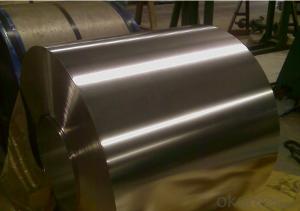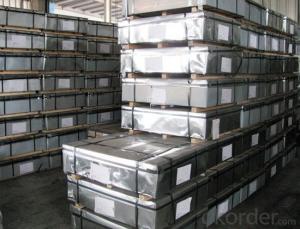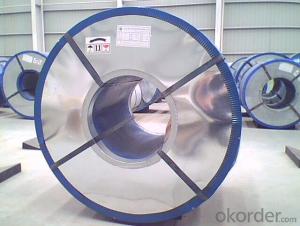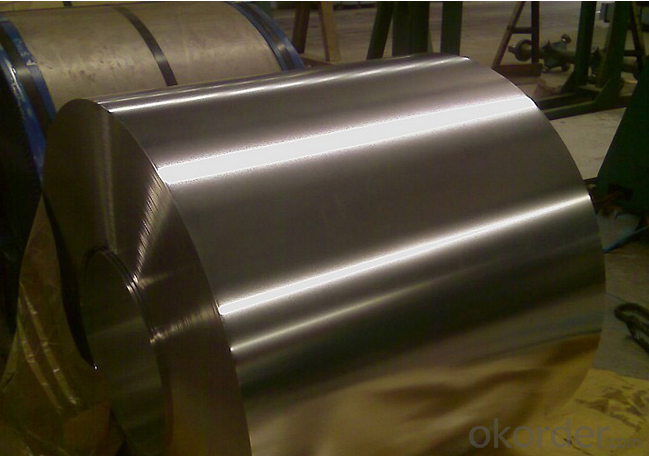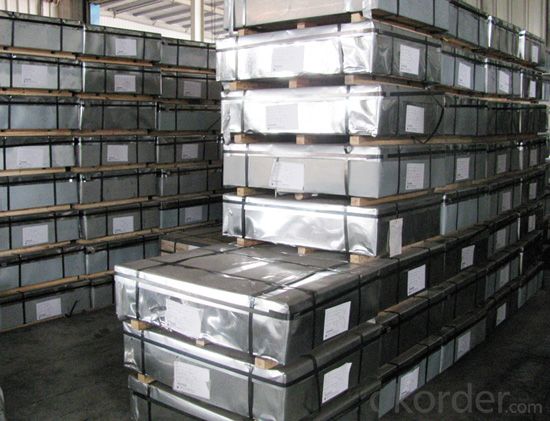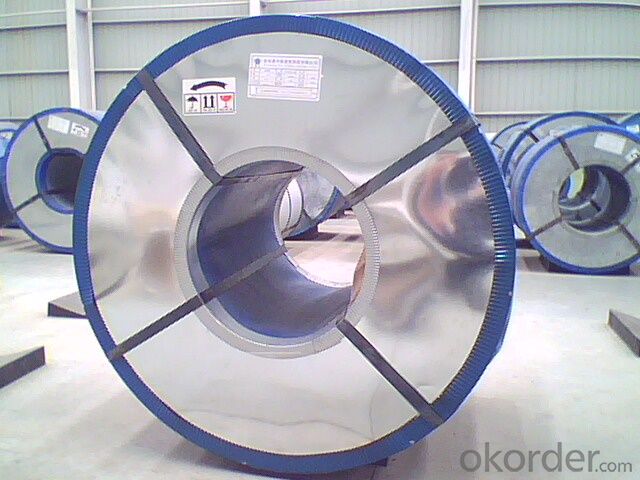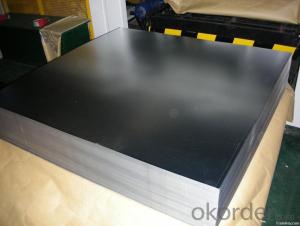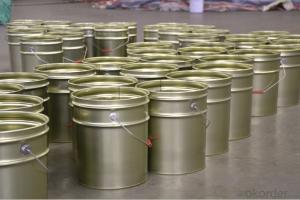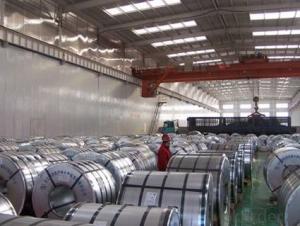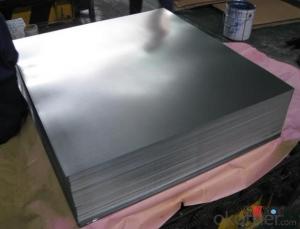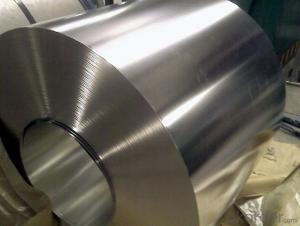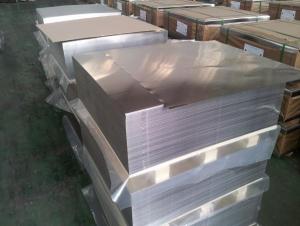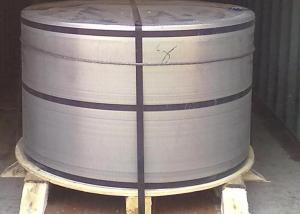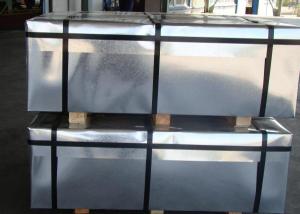Electrolytic Tinplate (ETP) Coils and Sheets for Foods Packaging
- Loading Port:
- Tianjin
- Payment Terms:
- TT OR LC
- Min Order Qty:
- 25 m.t.
- Supply Capability:
- 7000 m.t./month
OKorder Service Pledge
OKorder Financial Service
You Might Also Like
1.Structure of Electrolytic Tinplate (ETP) Description
Electrolytic Tin Plate Coils and Sheets for Foods Metal Packaging, is one thin steel sheet with a coating of tin applied by electrolytic deposition. Tinplate made by this process is essentially a sandwich in which the central core is strip steel. This core is cleaned in a pickling solution and then fed through tanks containing electrolyte, where tin is deposited on both sides. As the strip passes between high-frequency electric induction coils, it is heated so that the tin coating melts and flows to form a lustrous coat.
2.Main Features of the Electrolytic Tinplate (ETP)
Appearance – Electrolytic Tin Plate is characterized by its beautiful metallic luster. Products with various kinds of surface roughness are produced by selecting the surface finish of the substrate steel sheet.
Paintability and printability – Electrolytic Tin Plates have excellent paintability and printability. Printing is beautifully finished using various lacquers and inks.
Formability and strength – Electrolytic Tin Plates have got very good formability and strength. By selecting a proper temper grade, appropriate formability is obtained for different applications as well as the required strength after forming.
Corrosion resistance – Tinplate has got good corrosion resistance. By selecting a proper coating weight, appropriate corrosion resistance is obtained against container contents. Coated items should meet 24 hour 5 % salt spray requirement.
Solderability and weldability – Electrolytic Tin Plates can be joined both by soldering or welding. These properties of tinplate are used for making various types of cans.
Hygienic – Tin coating provides good and non toxic barrier properties to protect food products from impurities, bacteria, moisture, light and odours.
Safe – Tinplate being low weight and high strength makes food cans easy to ship and transport.
Eco friendly – Tinplate offers 100 % recyclability.
Tin is not good for low temperature applications since it changes structure and loses adhesion when exposed to temperatures below – 40 deg C.
3.Electrolytic Tinplate (ETP) Images
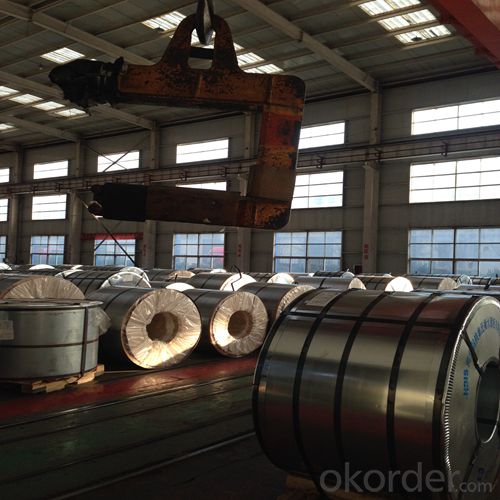
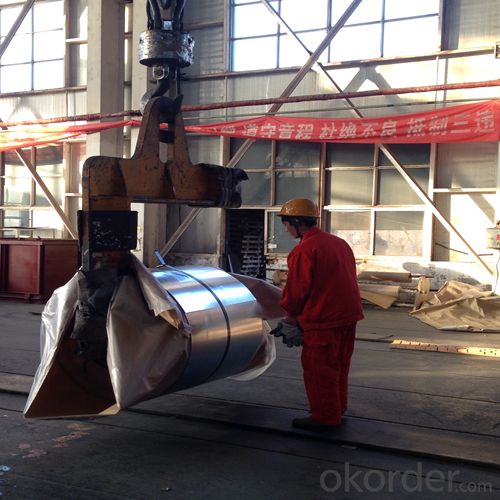

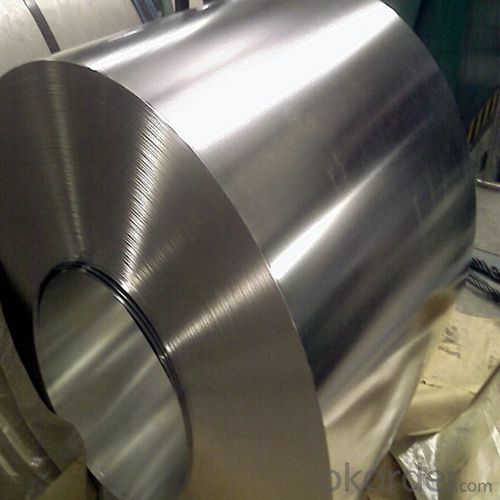
4.Electrolytic Tinplate (ETP) Specification
Standard | ISO 11949 -1995, GB/T2520-2000,JIS G3303,ASTM A623, BS EN 10202
|
Material | MR,SPCC |
Thickness | 0.15mm - 0.50mm |
Width | 600mm -1150mm |
Temper | T1-T5 |
Annealing | BA & CA |
Coil Inner Diameter | 508mm |
Weight | 6-10 tons/coil 1~1.7 tons/sheets bundle |
Passivation | 311 |
Oil | DOS |
Surface | Finish,bright,stone,matte,silver |
5.FAQ of Electrolytic Tinplate (ETP)
- How are the Electrolytic Tin Plates specified?
The Electrolytic Tin Plates are specified as per the steel base, extent of tempering, the coating weight, annealing method and the surface finish.
- How many types there are for base steels?
The base steels are of three types: Type MR, L, D
Please send us Email. we will give you a quick response in seconds .
- How is your quality ?
All our quality is prime even the secondary quality . We have many years experience
In this field with serious quality control standard . Advanced equipment, We welcome your visit to our factory .
- Q: How is tinplate affected by different types of cosmetics?
- Tinplate can be affected by different types of cosmetics due to their chemical composition. Certain cosmetics, such as those containing acidic or alkaline ingredients, can cause corrosion or discoloration on the tinplate surface. Additionally, prolonged exposure to certain cosmetics, especially those containing solvents or oils, can lead to the degradation of the protective coating on the tinplate, making it more susceptible to rusting. Therefore, it is important to choose cosmetics that are compatible with tinplate packaging to ensure its longevity and integrity.
- Q: Can tinplate be used for toys and games?
- Yes, tinplate can definitely be used for toys and games. Tinplate is a durable and versatile material that can be easily molded into various shapes and sizes, making it suitable for manufacturing different types of toys and games. Its corrosion-resistant properties also ensure the longevity of the toys, making it a popular choice in the industry.
- Q: How is tinplate affected by exposure to moisture?
- Tinplate is highly susceptible to corrosion when exposed to moisture. The presence of water initiates a chemical reaction that leads to the formation of tin oxide, which causes the tinplate to rust. This can result in the degradation of the material and compromise its structural integrity. Therefore, it is essential to protect tinplate from moisture to ensure its longevity and prevent corrosion.
- Q: Can tinplate be printed on?
- Yes, tinplate can be printed on.
- Q: Can tinplate be used for HVAC systems?
- Yes, tinplate can be used for HVAC systems. Tinplate is a durable and corrosion-resistant material that is commonly used in the manufacturing of HVAC components such as ductwork, vents, and fittings. It provides excellent protection against moisture and can withstand high temperatures, making it suitable for HVAC applications.
- Q: What are the advantages of using tinplate for toys and games?
- One advantage of using tinplate for toys and games is its durability. Tinplate is a strong material that can withstand rough play and handling, making it ideal for toys that may be subjected to frequent use and potential impacts. Additionally, tinplate is resistant to corrosion, ensuring that the toys and games made from this material will last longer and maintain their quality. Furthermore, tinplate can be easily shaped and molded into various designs, allowing for the creation of intricate and detailed toys and games. Overall, the use of tinplate in the manufacturing of toys and games offers advantages in terms of durability, longevity, and design flexibility.
- Q: What are the main differences between tinplate and tinplate laminates?
- The main differences between tinplate and tinplate laminates lie in their composition and functionality. Tinplate is a steel sheet coated with a thin layer of tin, providing excellent corrosion resistance and a shiny appearance. On the other hand, tinplate laminates consist of a layer of tinplate combined with other materials like paper, plastic, or film. These laminates offer enhanced properties such as improved barrier protection, flexibility, and customization options for specific packaging needs. Overall, tinplate laminates offer a wider range of applications and versatility compared to traditional tinplate.
- Q: How is tinplate stored and transported?
- Tinplate is typically stored and transported in rolls or sheets. It is commonly packaged in coils and secured with strapping or wrapping to prevent damage during transportation. These coils or sheets are then loaded onto trucks, ships, or trains for distribution to manufacturers and consumers. Additionally, proper handling and storage conditions are crucial to maintain the quality of tinplate, such as protecting it from moisture, extreme temperatures, and physical impact.
- Q: What is the difference between food grade tinplate and ordinary chemical tinplate? What is the difference between MR material and SPCC?
- Tinned food grade and non food grade. The main brands are MR and SPCC. because the meat food will be wall mounted in contact with food tin coated with two layers of yellow food, the food is yellow anti solvent, anti general acid-base, thus ensuring the safety of food packaging containing iron. The food there is no absolute security argument, now the technology has been fully capable of ensuring the safety of food containing.MR's impurity is a little more than SPCC, and the price is a little high. It's OK to use SPCC to spread two layers of food on the outside
- Q: What are the main challenges in the recycling of tinplate?
- One of the main challenges in the recycling of tinplate is the separation of tin from the steel. Tin is a valuable material and it is important to recover as much of it as possible during the recycling process. However, separating tin from steel can be a complex and energy-intensive process. Additionally, contaminants such as paints, coatings, and other metals need to be removed before the tinplate can be recycled, which adds to the difficulty of the recycling process. Another challenge is the collection and sorting of tinplate waste, as it often ends up mixed with other materials in municipal waste streams. This makes it necessary to implement effective collection and sorting systems to ensure that tinplate is properly recycled.
Send your message to us
Electrolytic Tinplate (ETP) Coils and Sheets for Foods Packaging
- Loading Port:
- Tianjin
- Payment Terms:
- TT OR LC
- Min Order Qty:
- 25 m.t.
- Supply Capability:
- 7000 m.t./month
OKorder Service Pledge
OKorder Financial Service
Similar products
Hot products
Hot Searches
Related keywords
